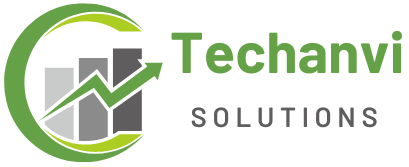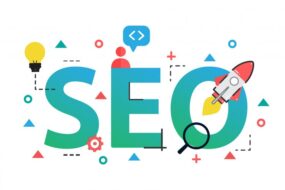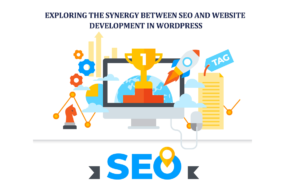
Why is SEO important for strategic content and inbound marketing? A robust internet presence is crucial for the success of any business. Content and inbound marketing rely heavily on search engine optimization (SEO) to boost exposure, engagement, and conversions via organic search traffic. With more and more people turning to search engines for answers, it’s more important than ever to be familiar with SEO best practices. With search engine optimization (SEO), your material becomes more relevant and accessible for people looking for specific information. In this post, you will learn how to improve your strategy for sustained development by diving into the finest SEO techniques for content and inbound marketing.
Understanding the Connection Between SEO and Content Marketing
Without search engine optimization (SEO), content marketing-which centers on producing constant, high-quality material-could go overlooked. By raising your content’s visibility in search engine results, SEO helps you reach your target audience more effectively. Search engine optimization (SEO) ensures your WooCommerce product video fits in with how search engines like Google evaluate content based on relevancy and quality. You should study keywords and tailor your content to improve your search engine rankings. Writing with humans and search engines in mind increases exposure and interaction when search engine optimization (SEO) is part of a content marketing strategy.
The Role of Keywords in SEO for Content Marketing
When it comes to search engine optimization, keywords are supreme. These words stand in for the queries people make while using search engines to find specific information. Your content’s visibility in relevant search results can be enhanced by strategically using keywords. To do effective keyword research, you must choose phrases related to your content and have a high search volume. Tools like SEMrush and Google’s Keyword Planner make finding the correct keywords easier. Titles, headers, meta descriptions, and body content should organically include these keywords to improve readability and avoid keyword stuffing, which lowers ranks.
Optimizing On-Page SEO Elements for Better Rankings
Elements that are directly under your control on the website are referred to as on-page SEO. The structure of the URL, alt text, title tags, and meta tags are all part of this. Search engines evaluate your content based on each of these factors. To improve your page’s visibility in search engine results, ensure the title tag is optimized and contains your target term. Even while meta descriptions aren’t used to determine rankings, they have the potential to increase click-through rates by offering a captivating synopsis. Images with descriptive alt text are more likely to appear in search engine results. Improve the user experience even further by using clean, informative URLs.
Creating High-Quality, Engaging Content for SEO
Google prioritizes valuable and entertaining material. Prioritizing high-quality content above quantity is critical to effective content marketing. Content of high-quality answers to questions and solves issues for its target audience. When determining article quality, Google’s algorithm considers readability, relevancy, and originality. Material discovery is aided by using appropriate keywords; nevertheless, your matte audiences also provide value to hold the audience’s attention. In addition, long-form content frequently performs better as it delivers more in-depth insights, boosting the possibility of backlinks, shares, and higher ranks.
Importance of Backlinks in SEO for Inbound Marketing
Backlinks are an essential aspect of SEO, particularly for inbound marketing. Another website can link to it to show search engines that your content is valuable and trustworthy. This is called a backlink. Search engines will give your content more weight if it receives high-quality backlinks. If you want other websites to link to yours, you need to make content so good they want to link to it. Some effective methods to earn backlinks include guest posting, reaching out to influencers, and creating shareable infographics. Remember that high-quality backlinks from authoritative sites are more critical than links from low-quality sources, so prioritize quality over quantity.
Improving User Experience (UX) for Better SEO Performance
The importance of user experience (UX) in search engine optimization (SEO) is growing. When calculating rankings, Google takes user engagement into account. A smooth user experience is only possible with considerations like fast website loads, mobile compatibility, and intuitive navigation. Your search engine results can take a hit if your website has a high bounce rate due to poor usability. In contrast, user engagement and conversion rates are both enhanced by a well-organized, fast-loading, and user-friendly website. Ongoing work on your site’s speed and user experience can improve search engine optimization and user happiness.
The Power of Long-Tail Keywords in Content Marketing
More precise search terms with three or more words are long-tail keywords. Despite the lower search volumes, the lesser competition and often more excellent conversion rates make these terms a good choice. For content marketers, targeting long-tail keywords can help you acquire specialized audiences closer to making a buying decision. For example, an essential term like “running shoes” is broad, while a long-tail phrase like “best-running shoes for flat feet” targets a more targeted audience. Including long-tail keywords in your content enables you to rank better for more concentrated searches, enhancing the quality of your visitors.
Leveraging Analytics to Measure SEO Success in Inbound Marketing
Analytics play a significant role in assessing the efficiency of SEO methods. Find out how well your content is doing regarding traffic, user engagement, and conversions with tools like Google Search Console and Google Analytics. Find out what content is working and what needs to work by monitoring indicators like organic traffic, bounce rates, and keyword rankings. Your SEO approach may be fine-tuned for improved results with regular examination. More focused and effective content production is possible with inbound marketing when you know where your leads are coming from and which pages are converting.
Optimizing for Voice Search in SEO and Content Marketing
With the proliferation of digital assistants such as Google Assistant, Alexa, and Siri, voice search is quickly becoming the norm. Optimizing your content for voice search entails concentrating on conversational language and long-tail keywords. People utilize natural terms when speaking into voice-activated devices; therefore, adding these to your content boosts the chances of getting discovered using voice search. “Where can I find the best coffee shop near me?” is a better target than “best coffee shop” as a keyword. It is crucial to offer simple, direct responses to frequently requested inquiries since voice search prefers highlighted snippets.
The Role of Social Media in Boosting SEO for Inbound Marketing
Even though social media signals do not immediately impact search engine results, social networks are crucial for attracting readers. If you want more people to see your material and link to it, sharing it on social media is a great way to boost your SEO. Increase organic traffic and brand recognition by interacting with your target audience on social media sites like Facebook, LinkedIn, and Twitter. You may promote your content marketing efforts and build relationships with influencers who can increase your reach on social media. The secret is making content your target audience will want to share and engage with.
Mobile Optimization: A Key Factor in Modern SEO
Search engine optimization (SEO) now heavily relies on mobile optimization due to the increasing number of individuals accessing the internet through mobile devices. Because of Google’s mobile-first indexing, your site’s mobile version will take precedence. Ensure your site is responsive, or you can change its display size to fit multiple screen sizes to make it mobile-friendly. Also, ensure your material is easily read, your navigation is mobile-friendly, and your site loads quickly. Inbound marketing relies heavily on mobile optimization to boost engagement and search engine optimization (SEO) by ensuring consumers can easily navigate the site from any device.
SEO-Friendly Content Structure: Organizing for Better Rankings
Readability and search engine optimization are two outcomes of content structure. Both humans and search engines benefit from structured content using headings (H1, H2, H3) to make it easier to navigate and index. If you want search engines to index your content more easily, ensure the headings contain relevant keywords. Also, make your content easier to read, particularly on mobile devices, using bullet points, numbered lists, and short paragraphs. Content that is easy to skim and digest keeps people engaged longer, lowering bounce rates and enhancing SEO. This systematic strategy will increase your content’s visibility in rich snippets.
Enhancing Local SEO for Better Inbound Marketing Results
Local search engine optimization is crucial for companies that aim to attract customers in a particular area. Using location-specific keywords in your content, titles, and meta descriptions is a great way to optimize for local searches. If you want your business to appear in local search results and on Google Maps, one of the most important things you can do for local SEO is create and maintain a Google My Business page. When it comes to inbound marketing, local SEO is an excellent tool for drawing in local customers. It can increase both foot traffic and local internet conversions. Engaging with customer reviews and local directories is a beautiful idea to enhance your local SEO further and make your business stand out in the neighborhood.
Using Content Hubs to Strengthen Your SEO Strategy
An extensive resource on a particular subject may be built with content hubs and collections of connected, related material. By centralizing your material and making it easier for search engines to comprehend its breadth, content hubs aid in search engine optimization by increasing your authority. For example, a content hub on “digital marketing” can include relevant pieces on SEO, social media marketing, and content planning. This technique raises ranks for specific keywords and improves user experience by pointing users to similar resources, keeping them on your site longer, and improving interaction.
Conclusion:
SEO is an integral aspect of both content marketing and inbound marketing. By adopting SEO best practices like keyword optimization, providing high-quality content, enhancing user experience, and harnessing analytics, businesses may boost their online presence and attract more focused traffic. Adjusting to new trends like voice search and mobile optimization ensures your content stays relevant. Search engine optimization (SEO) enhances inbound marketing by making your content more discoverable and attracting customers. Achieving sustained growth, increasing leads, and eventually boosting conversions are all possible with SEO mastery.
Contact us for website promotion, website designing and development services by visiting our website.
Want to Submit Guest Post Send Mail Now!
Recent Post
How to Boost Keywords Ranking Without Website
- February 18, 2025
- 5 min read
How to share Google My Business Access
- February 12, 2025
- 1 min read
How Businesses Can Use Technology to Optimize
- February 4, 2025
- 7 min read
AI-Enhanced Insights and Analytics in SharePoint Development
- October 18, 2024
- 6 min read
SEO Best Practices for Content Marketing and
- October 18, 2024
- 9 min read








